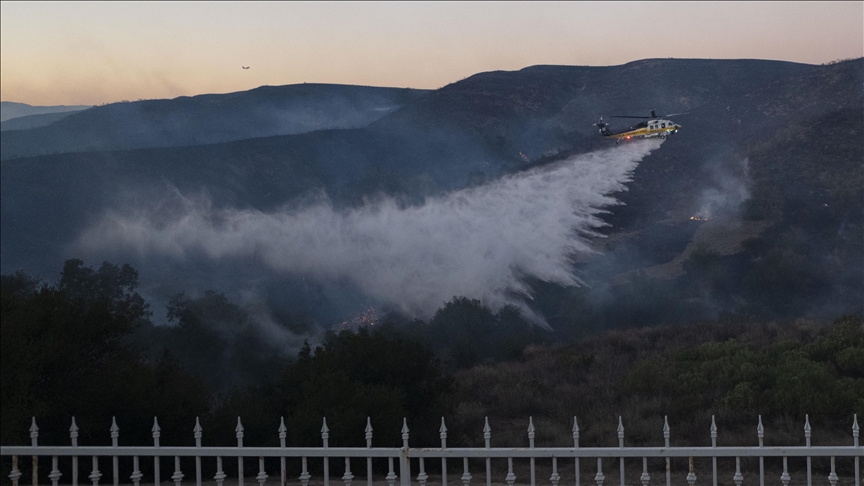Pink fire retardant used in Los Angeles fires controversial for wildlife impact
US has used it to fight blazes since 1963, but some current and former Forest Service employees say chemical retardant kills fish and is ineffective

ISTANBUL
In the battle against massive wildfires around Los Angeles, California, now on its 8th day, pink fire retardant powder is being sprayed on nearby vegetation and high-risk areas to slow the flames’ spread, but the powder has drawn controversy for its harmful impact on wildlife.
🧯 Pink fire retardant used in Los Angeles fires controversial for wildlife impact ⤵️
➡️ The US has used it to fight blazes since 1963, but some current and former Forest Service employees say chemical retardant kills fish and is ineffective https://t.co/loSKLiRaTi pic.twitter.com/VUDlBPIybT
The flame retardant, known as Phos-Chek, has been used to fight blazes in the US since 1963.
The substance is the primary long-term fire retardant used by the California Department of Forestry and Fire Protection, and it is the most widely used fire retardant globally.
But in 2022, a group of current and former US Forest Service employees filed a lawsuit accusing the federal agency of violating the nation's clean water laws by dropping the chemical retardant from planes onto forests, arguing that the chemical not only kills fish but is also ineffective.
A US district judge said she agreed, but she also allowed the Forest Service to continue using the retardant as it sought an environmental agency permit to do so.
This year, the service replaced the Phos-Chek formula with a less harmful version for wildlife.
The service enforces a strict ban on dropping fire retardant in environmentally sensitive areas, such as waterways and endangered species habitats, but makes exceptions "where human life or public safety are threatened."
In the four wildfires burning in Los Angeles and surrounding areas, over 37,000 acres have been scorched, at least 24 people have died, and 23 are still missing.
*Writing by Asiye Latife Yilmaz in Istanbul
Anadolu Agency website contains only a portion of the news stories offered to subscribers in the AA News Broadcasting System (HAS), and in summarized form. Please contact us for subscription options.



